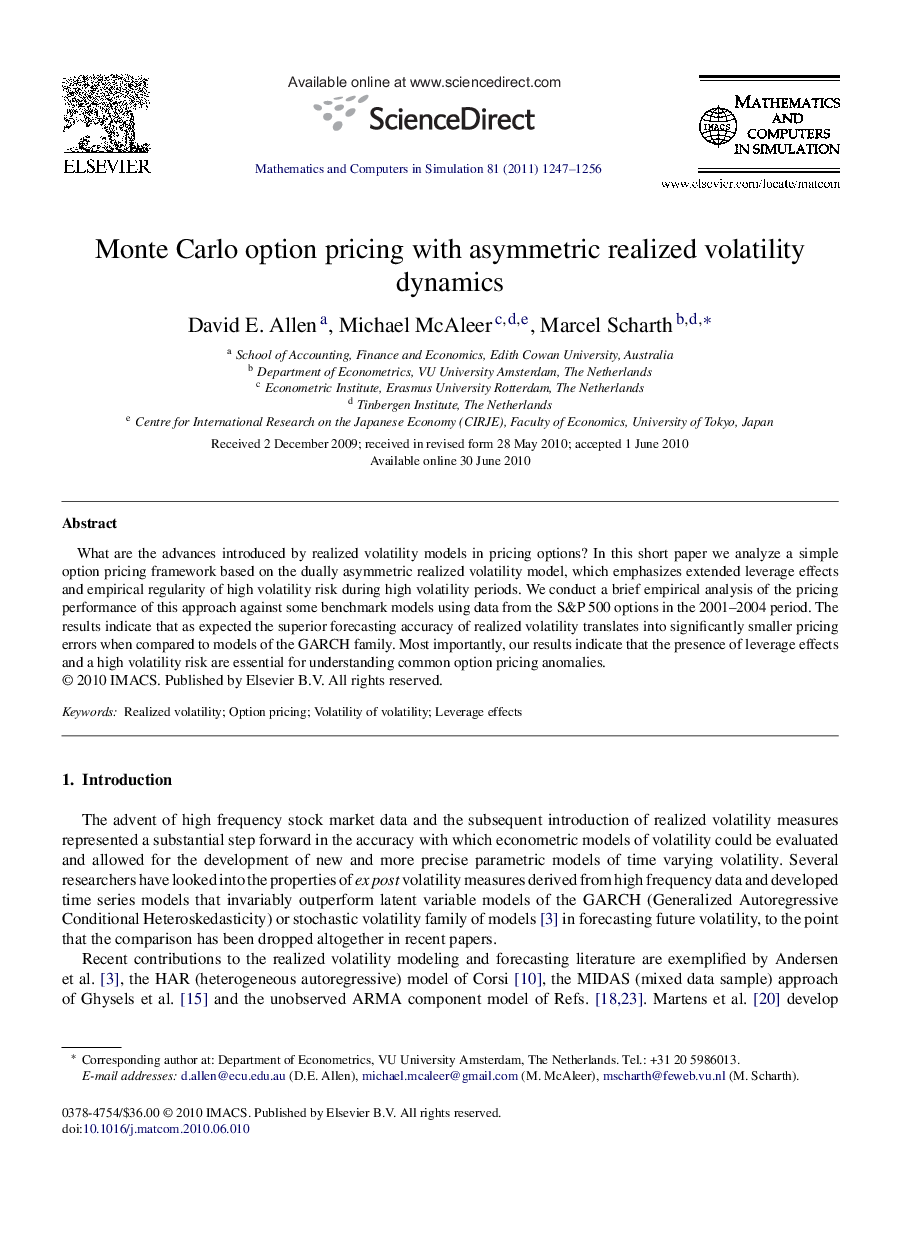| Article ID | Journal | Published Year | Pages | File Type |
|---|---|---|---|---|
| 1139827 | Mathematics and Computers in Simulation | 2011 | 10 Pages |
What are the advances introduced by realized volatility models in pricing options? In this short paper we analyze a simple option pricing framework based on the dually asymmetric realized volatility model, which emphasizes extended leverage effects and empirical regularity of high volatility risk during high volatility periods. We conduct a brief empirical analysis of the pricing performance of this approach against some benchmark models using data from the S&P 500 options in the 2001–2004 period. The results indicate that as expected the superior forecasting accuracy of realized volatility translates into significantly smaller pricing errors when compared to models of the GARCH family. Most importantly, our results indicate that the presence of leverage effects and a high volatility risk are essential for understanding common option pricing anomalies.
